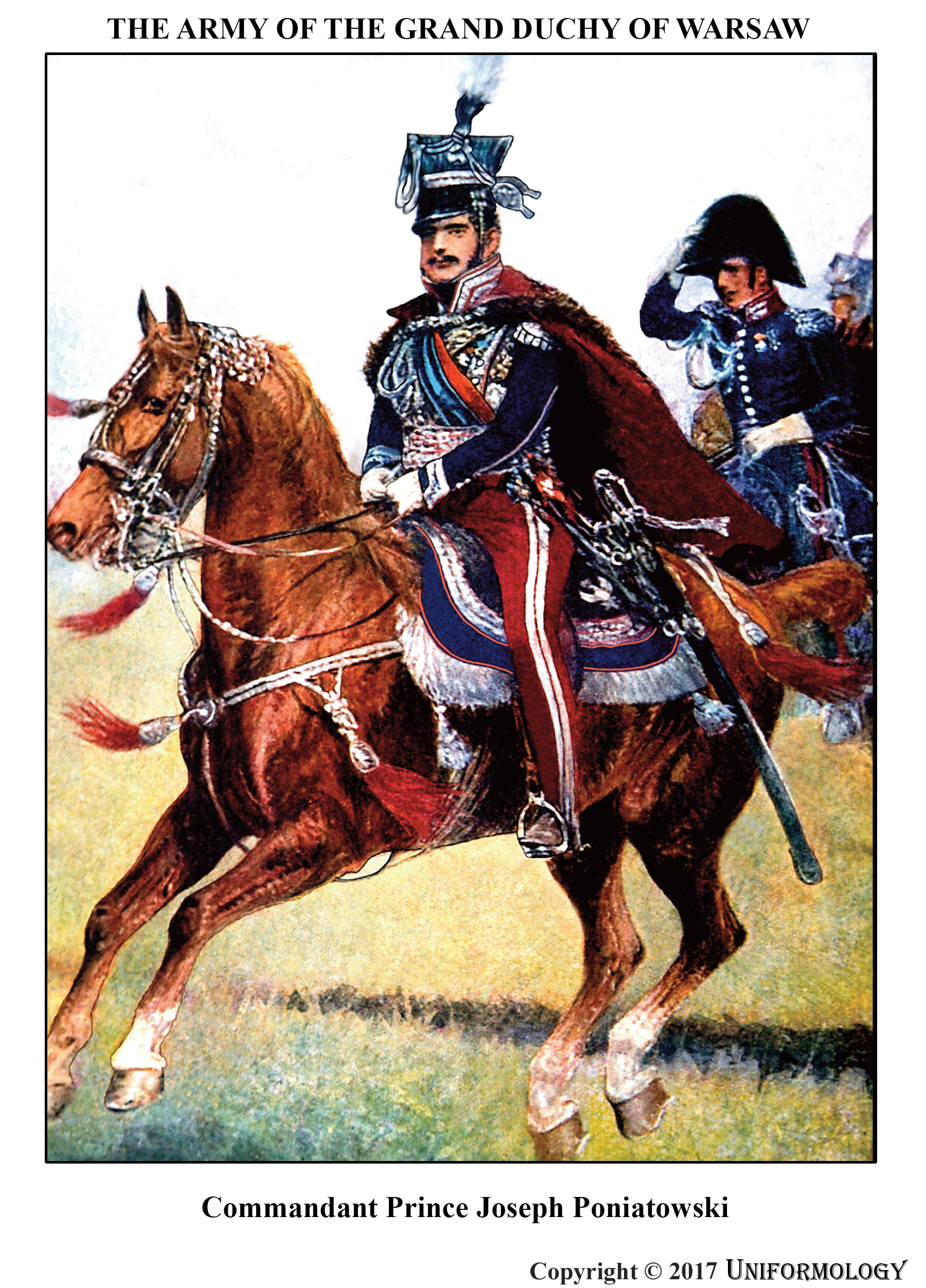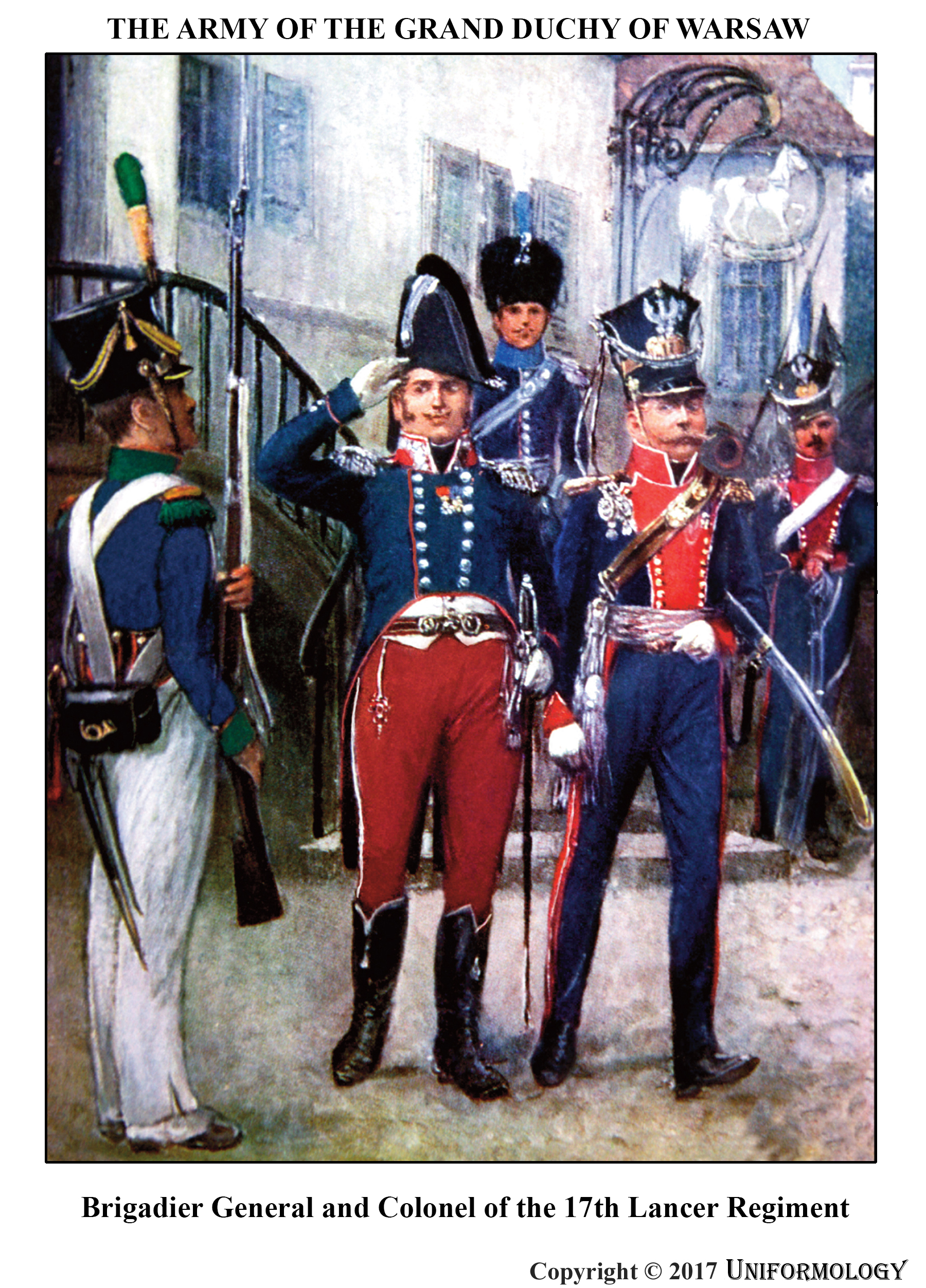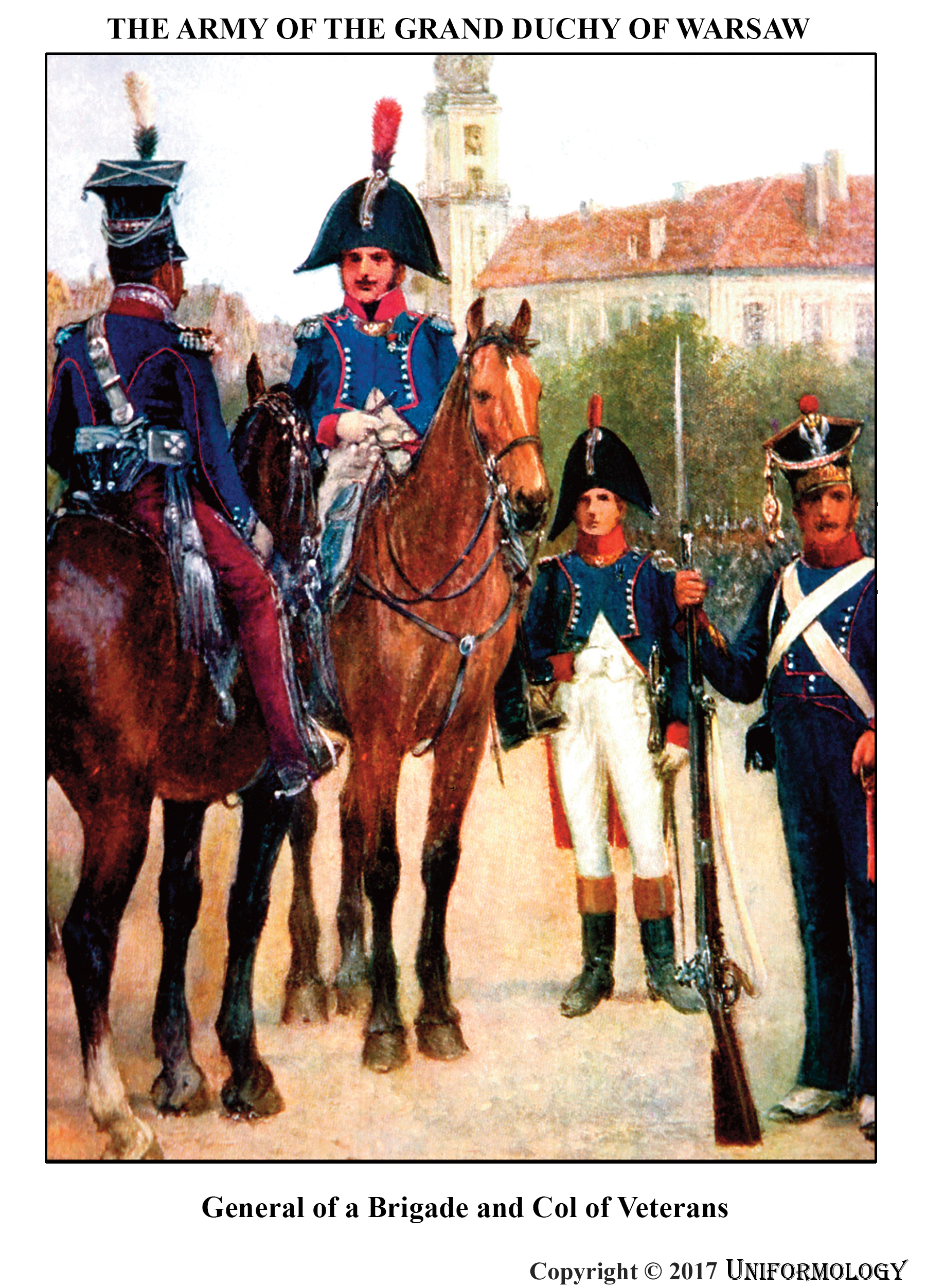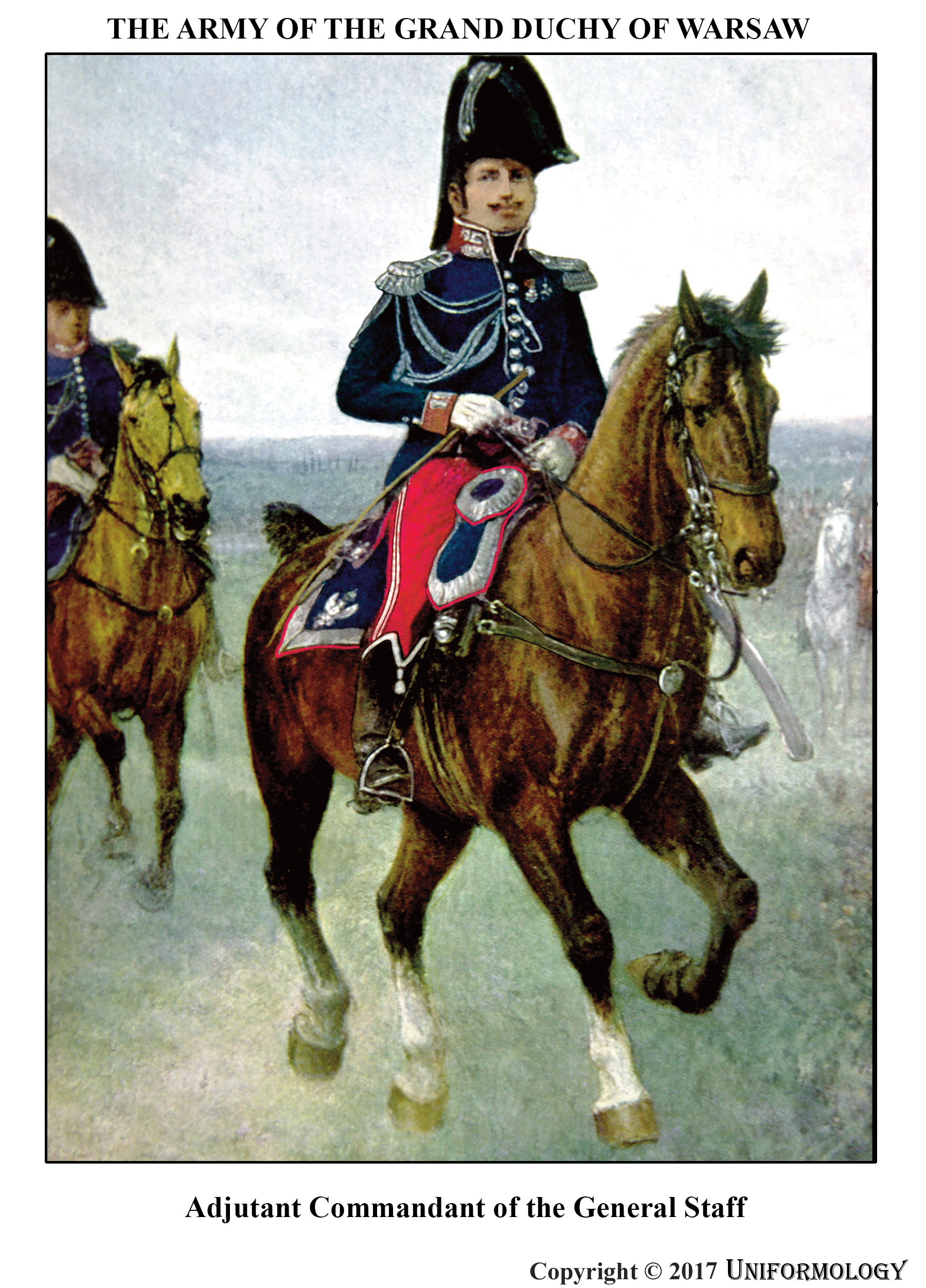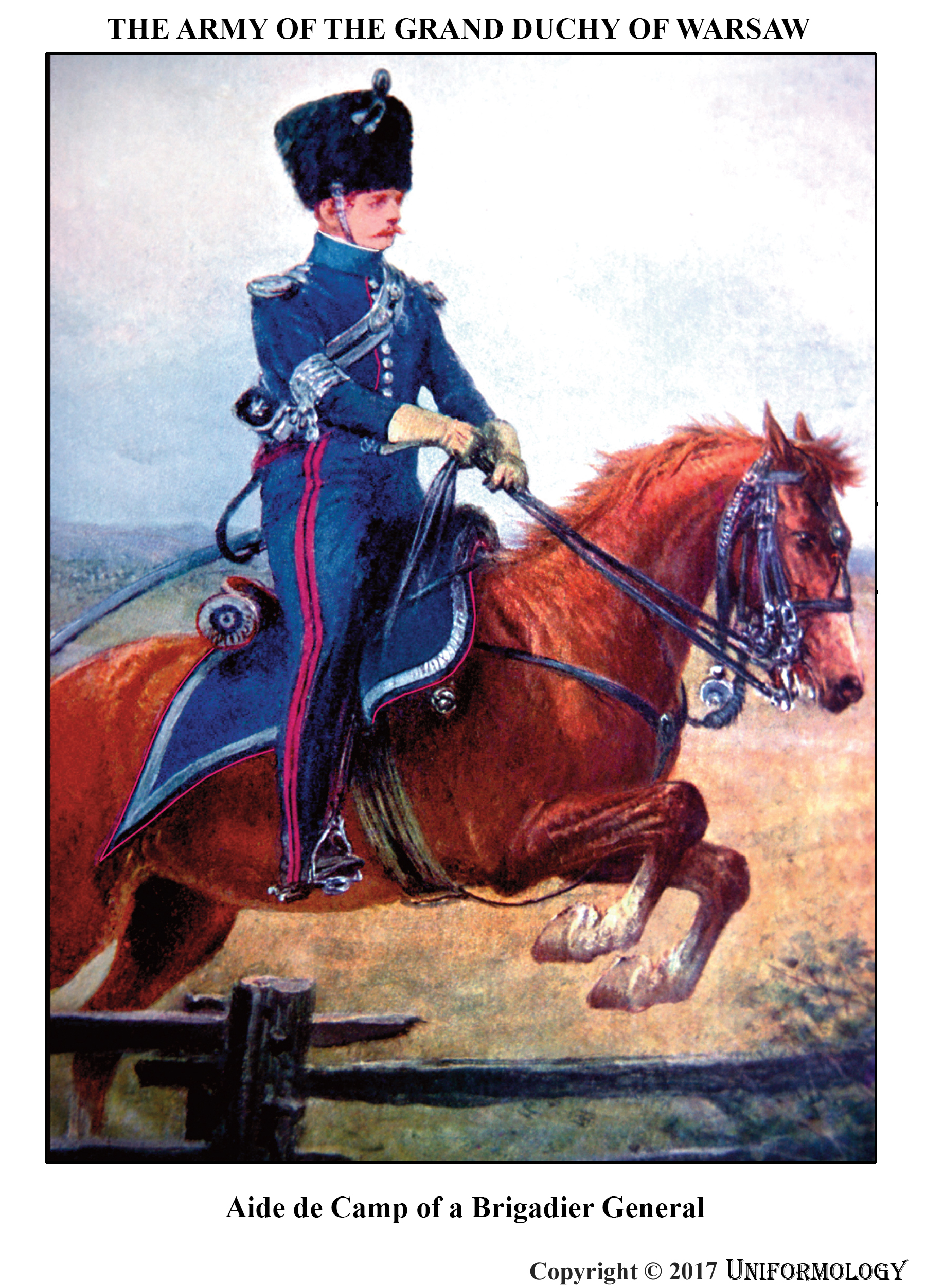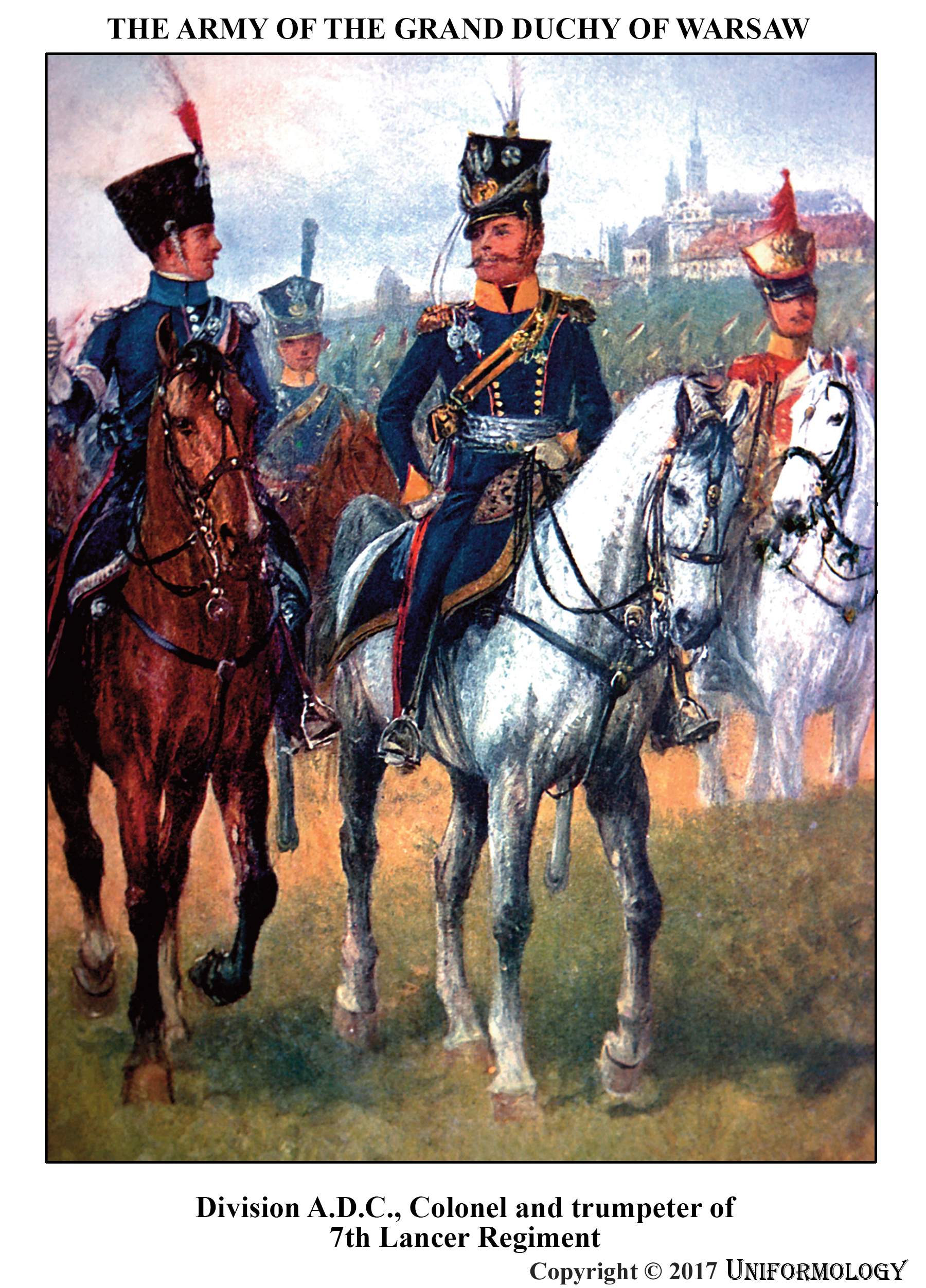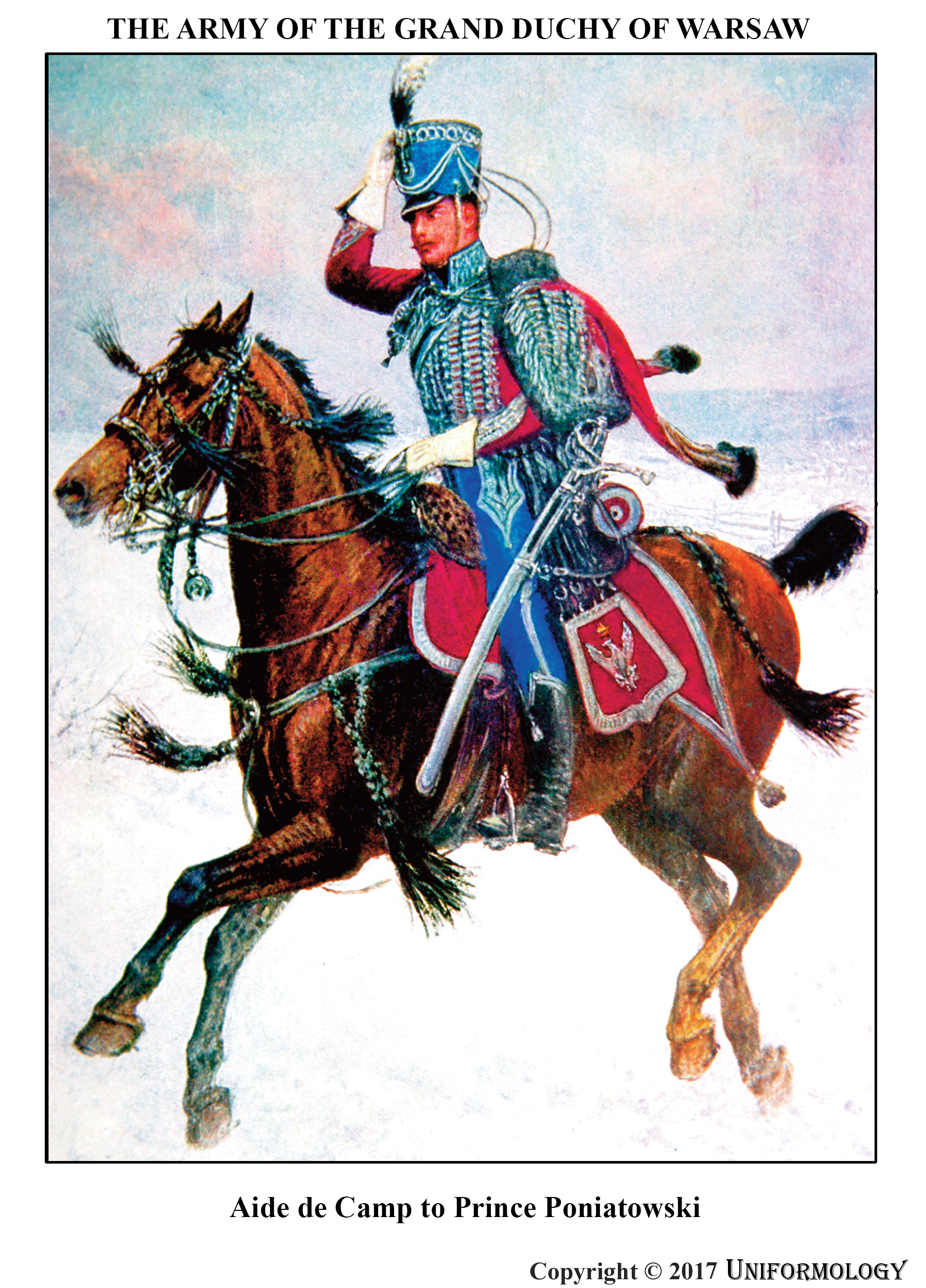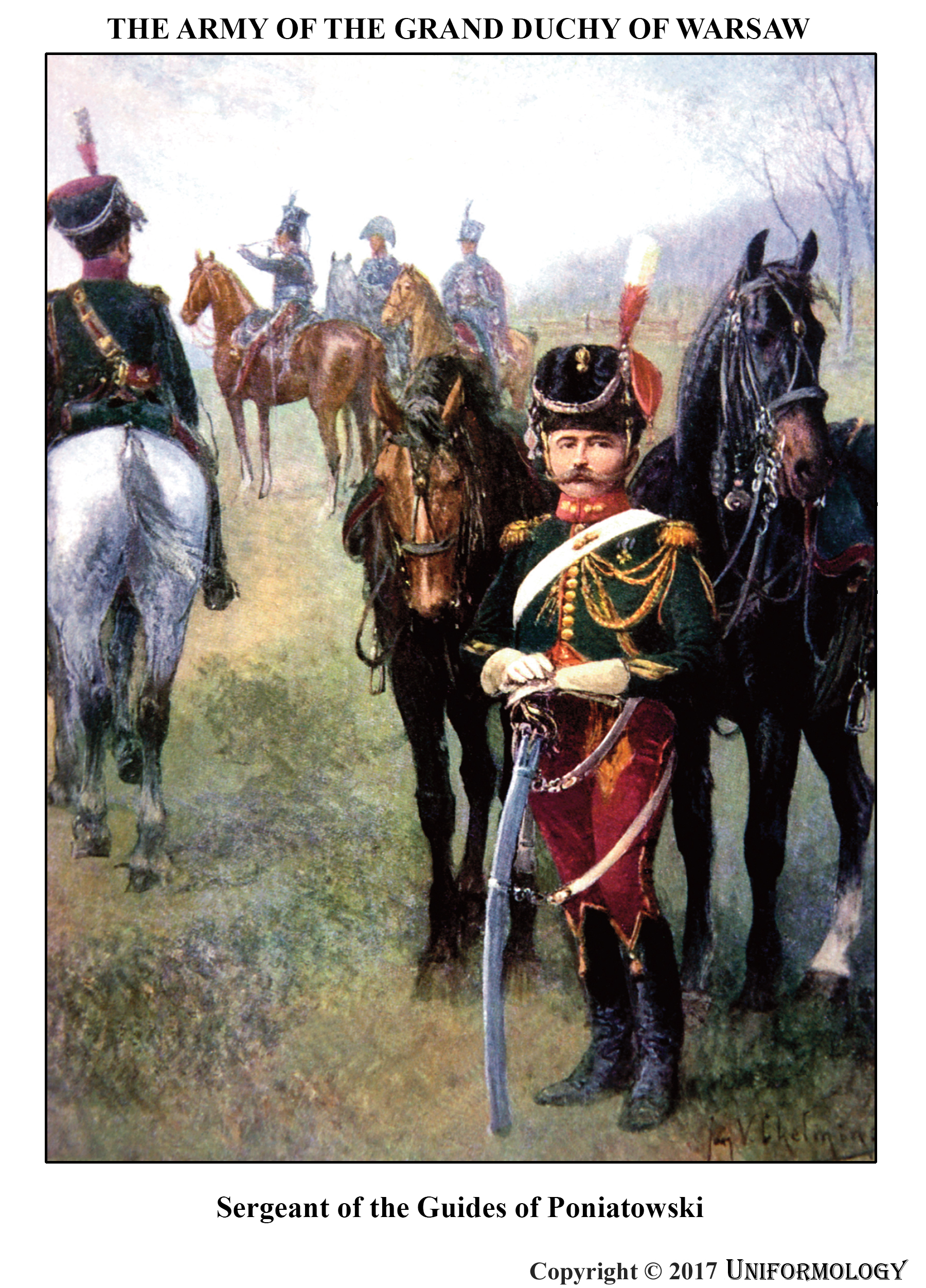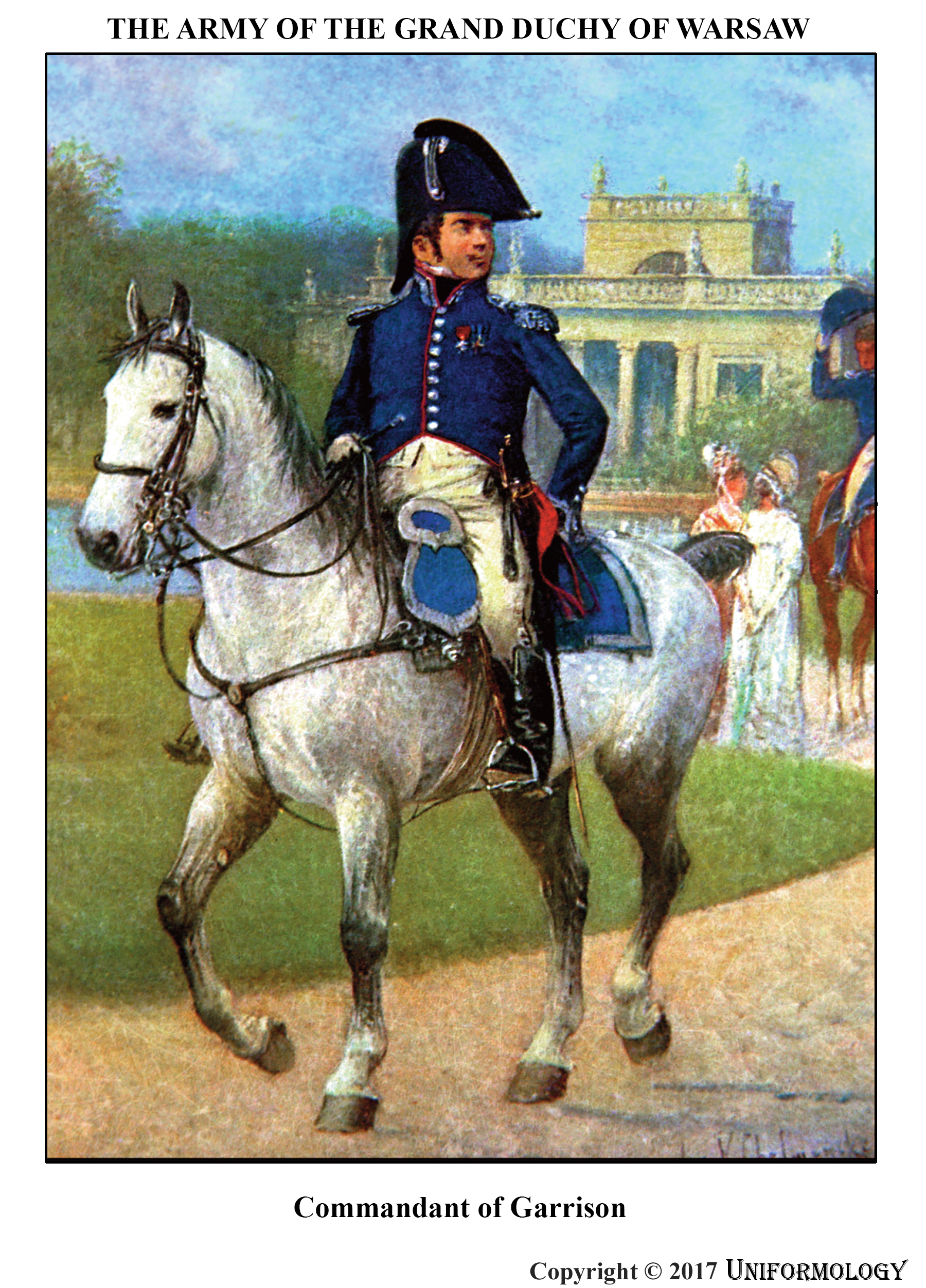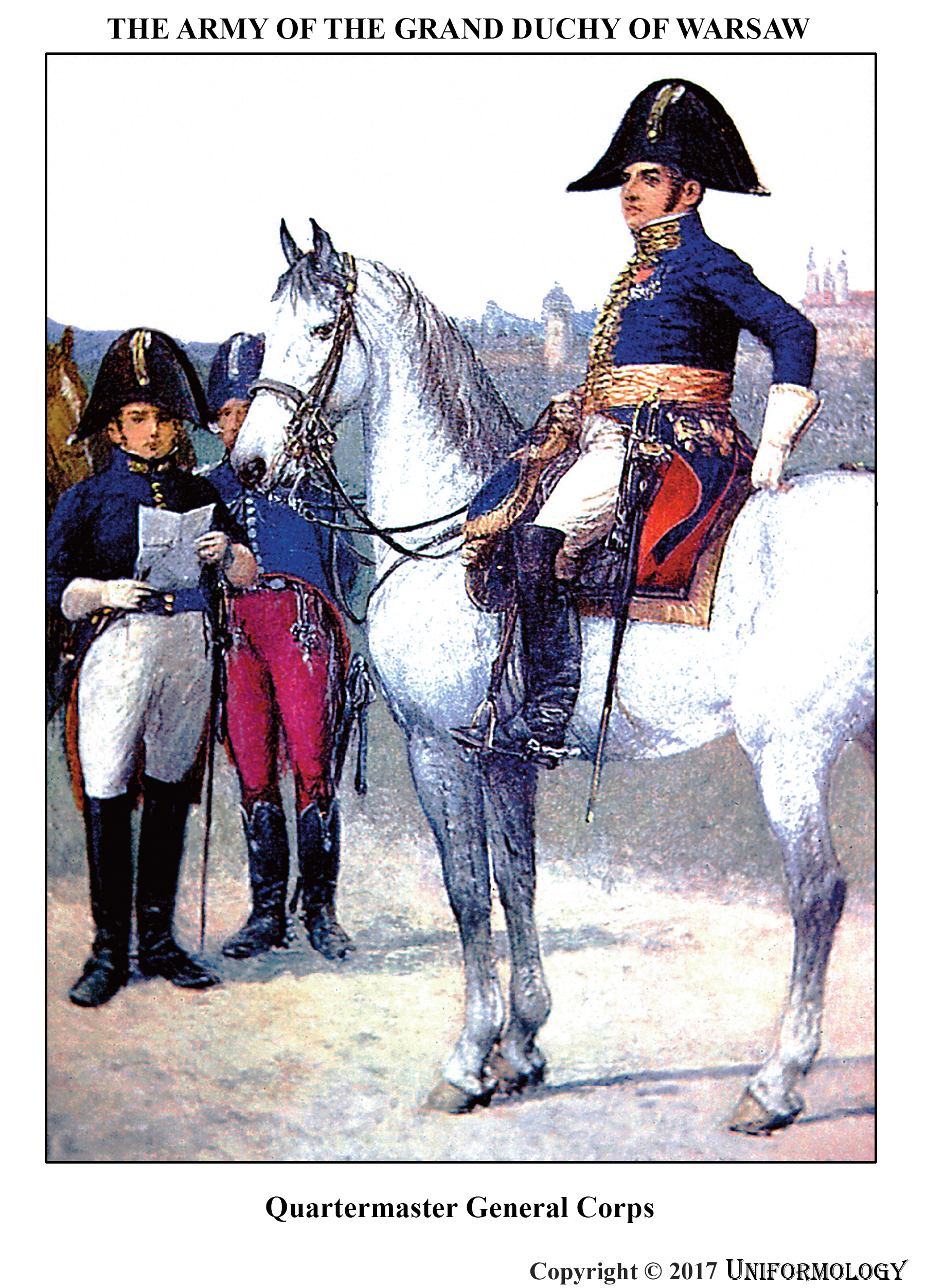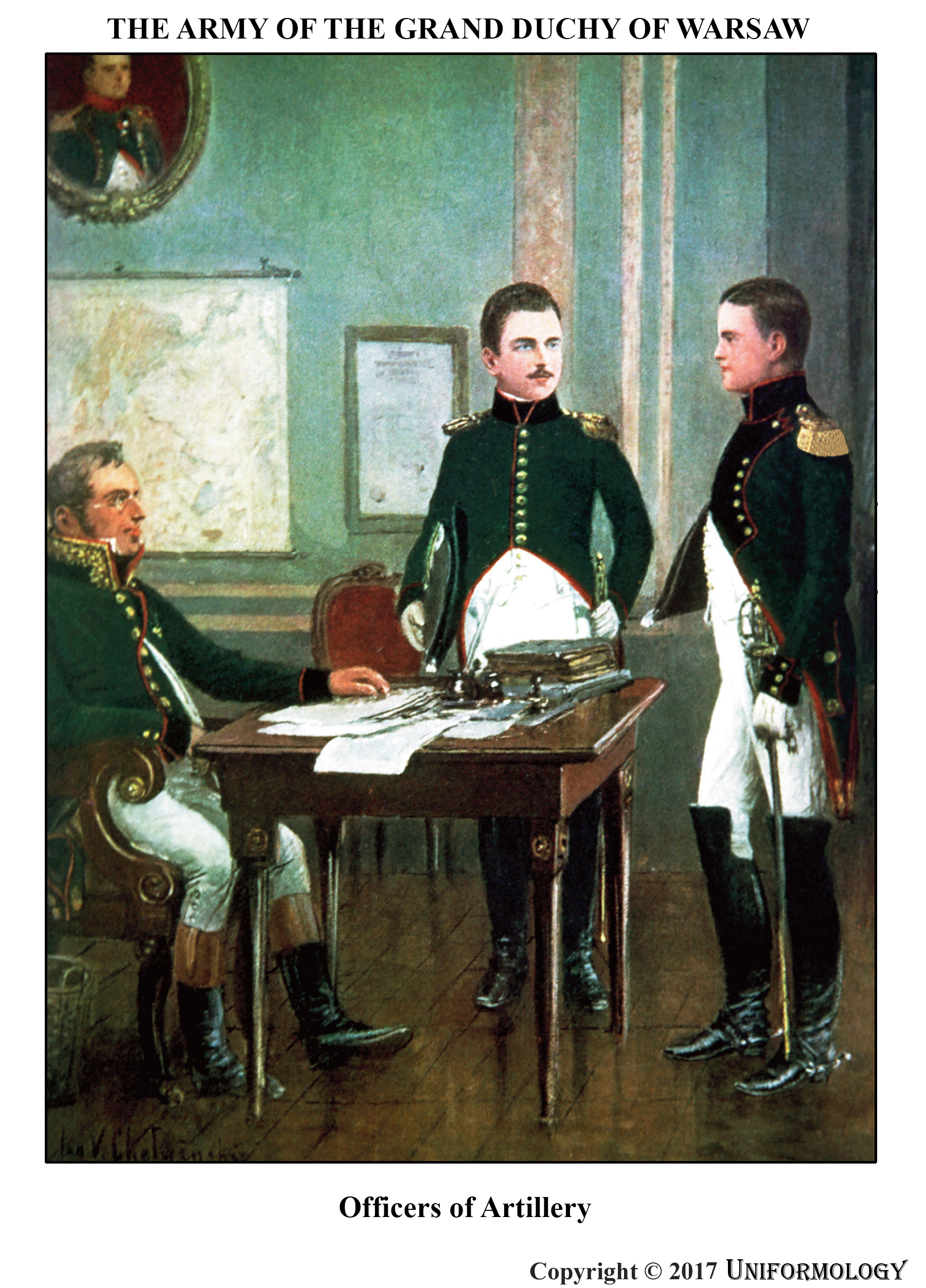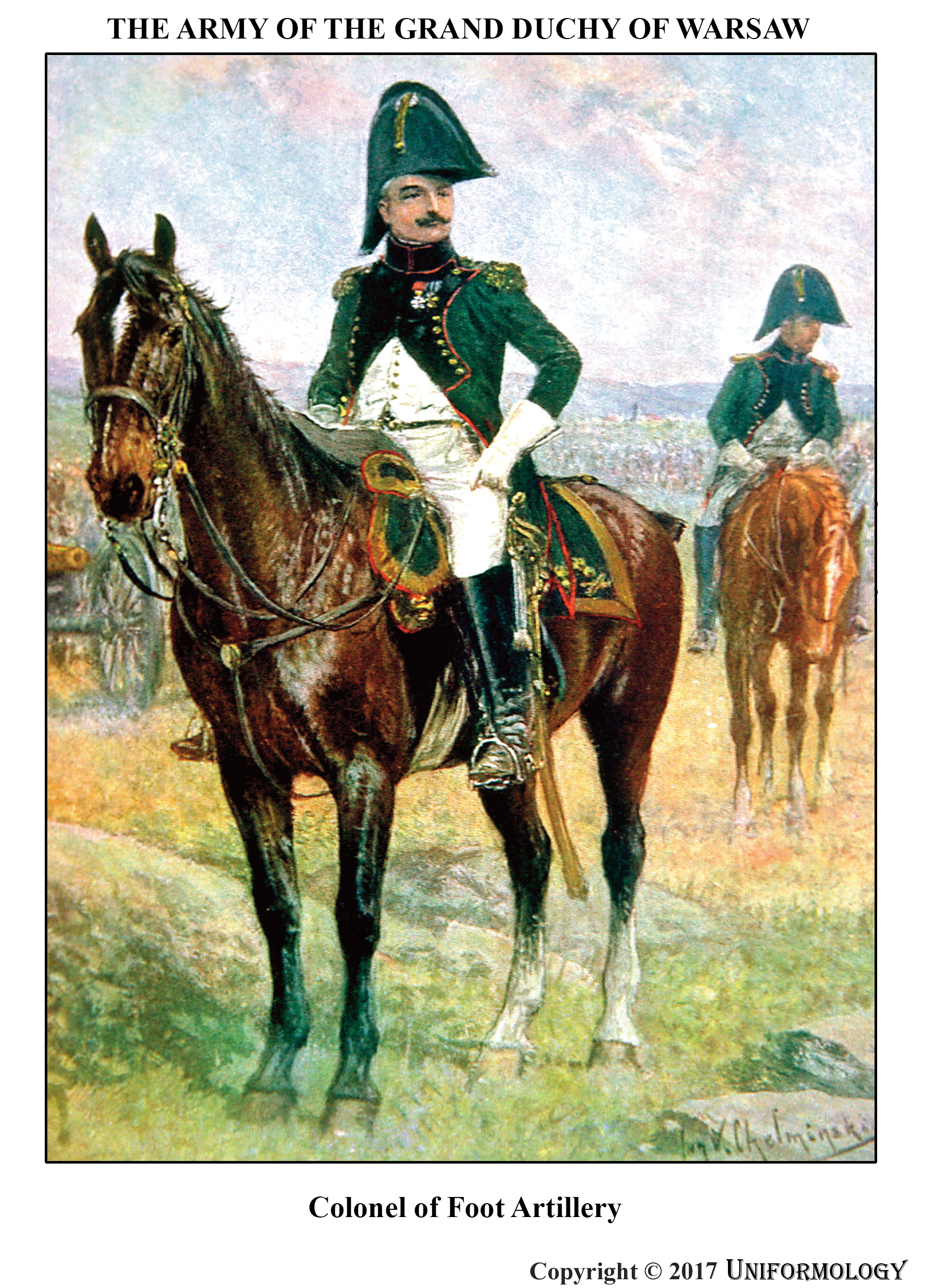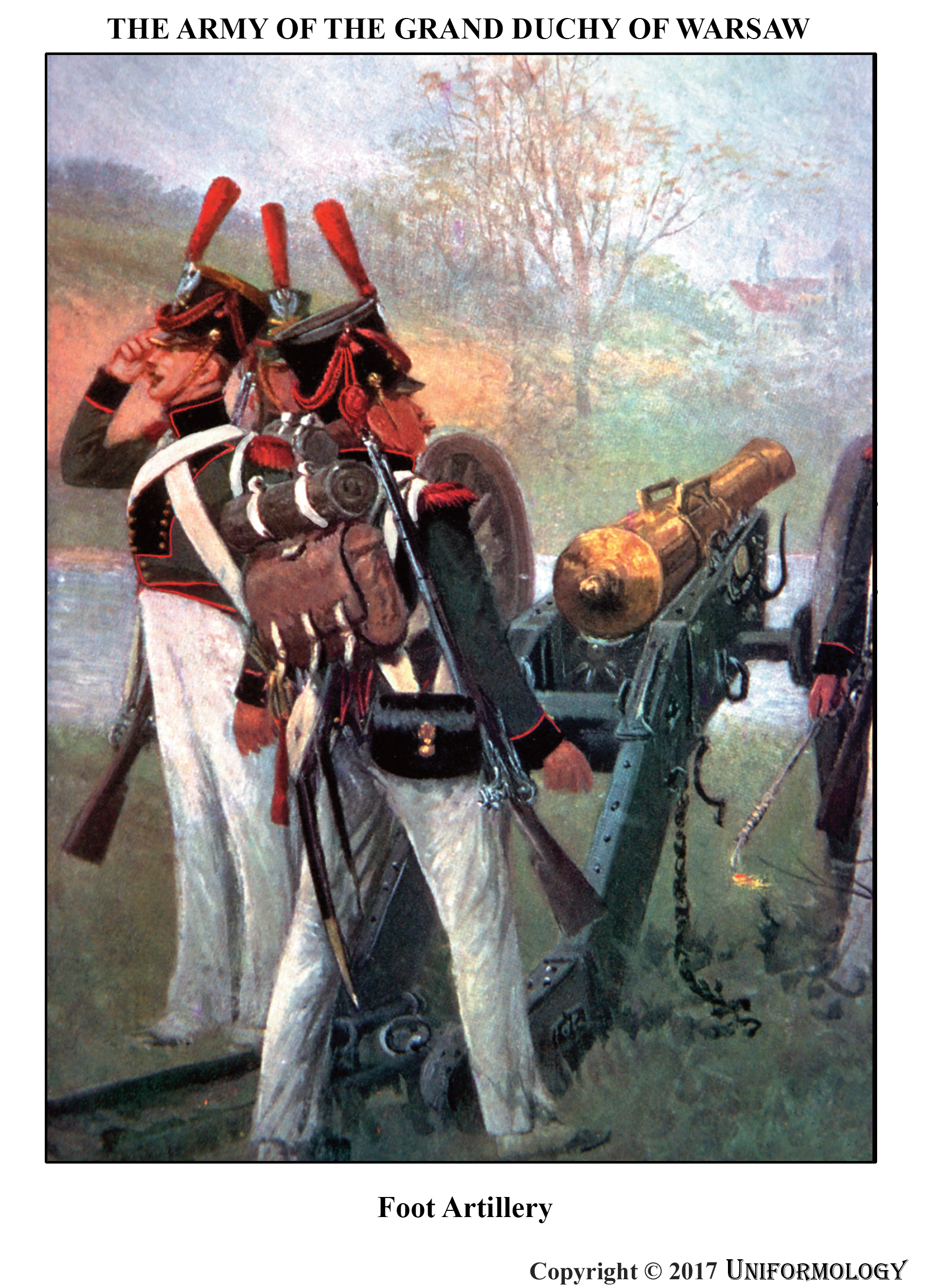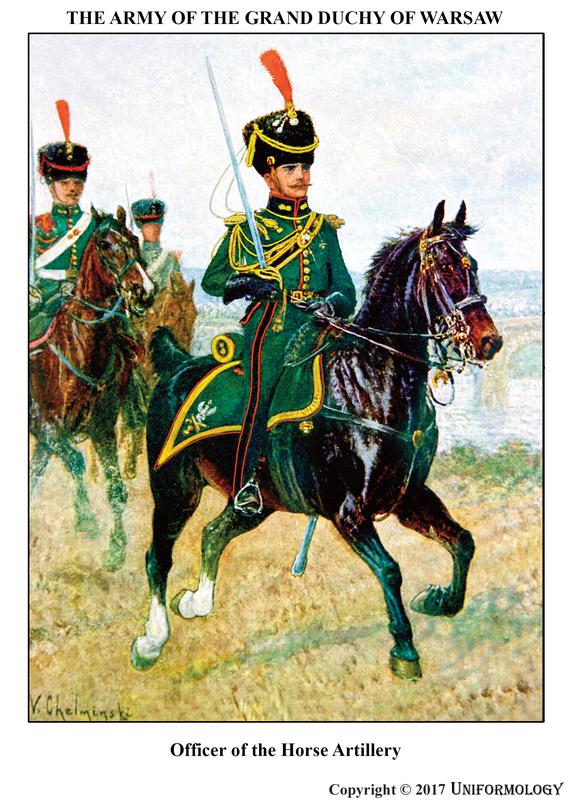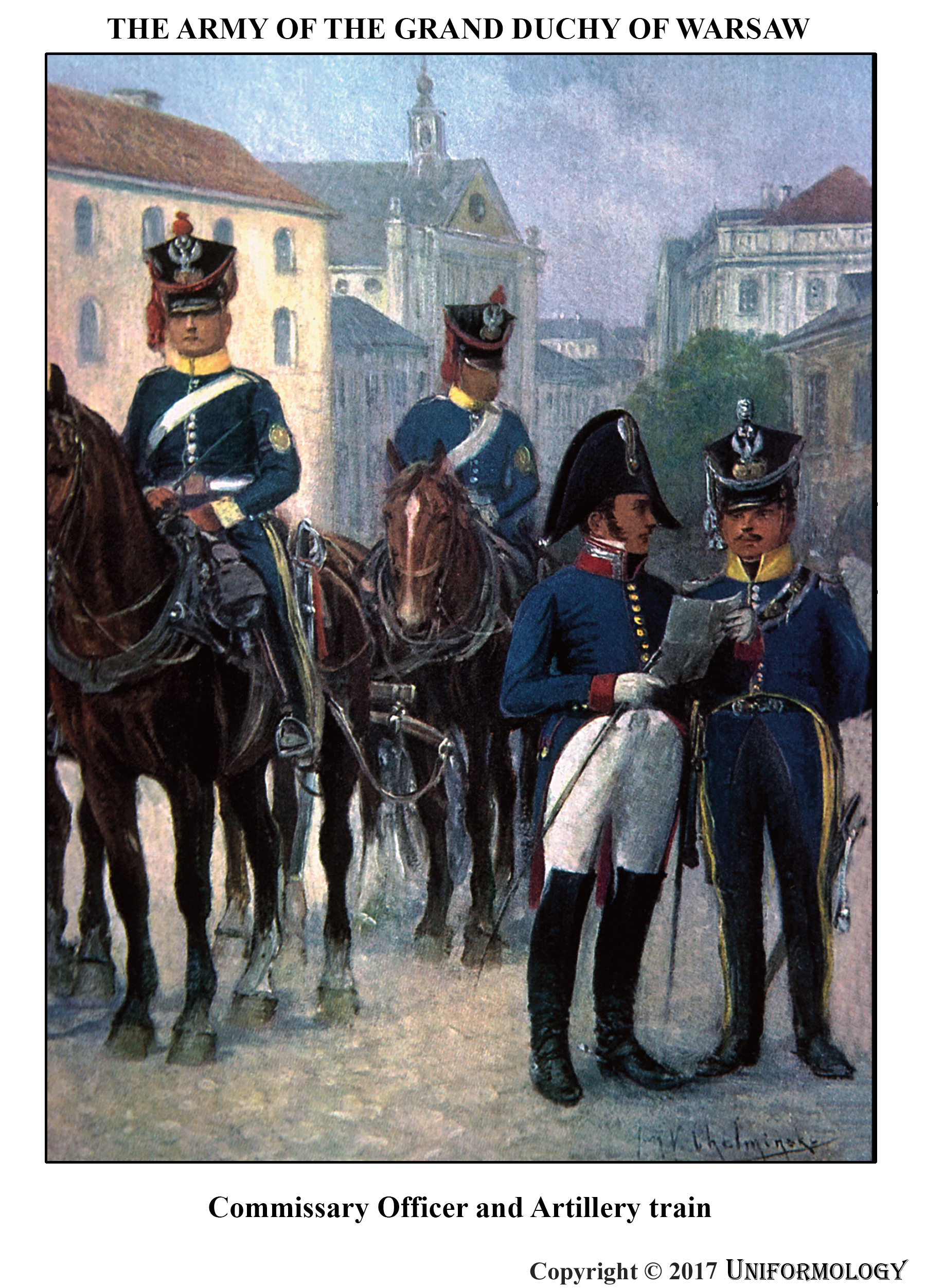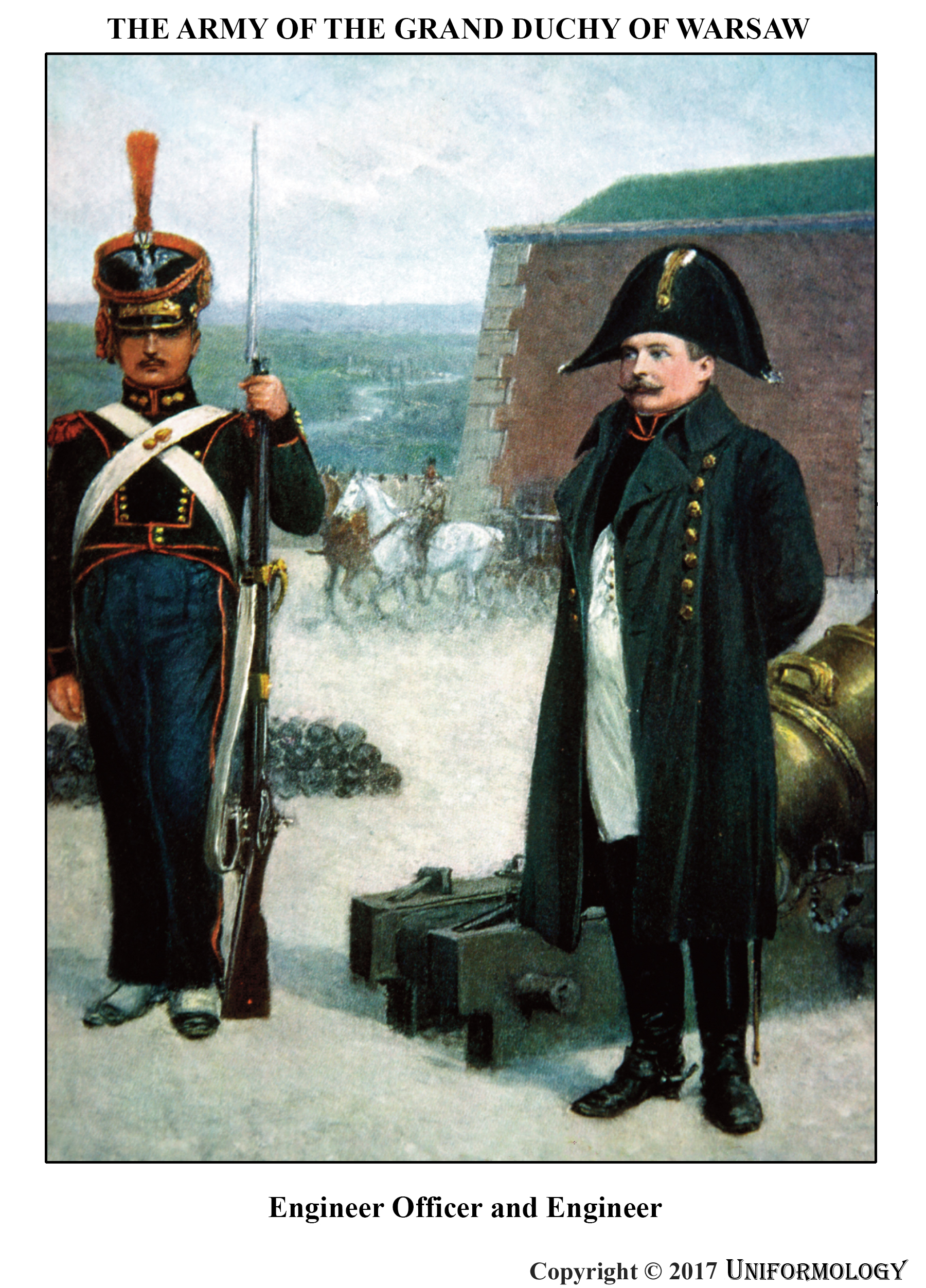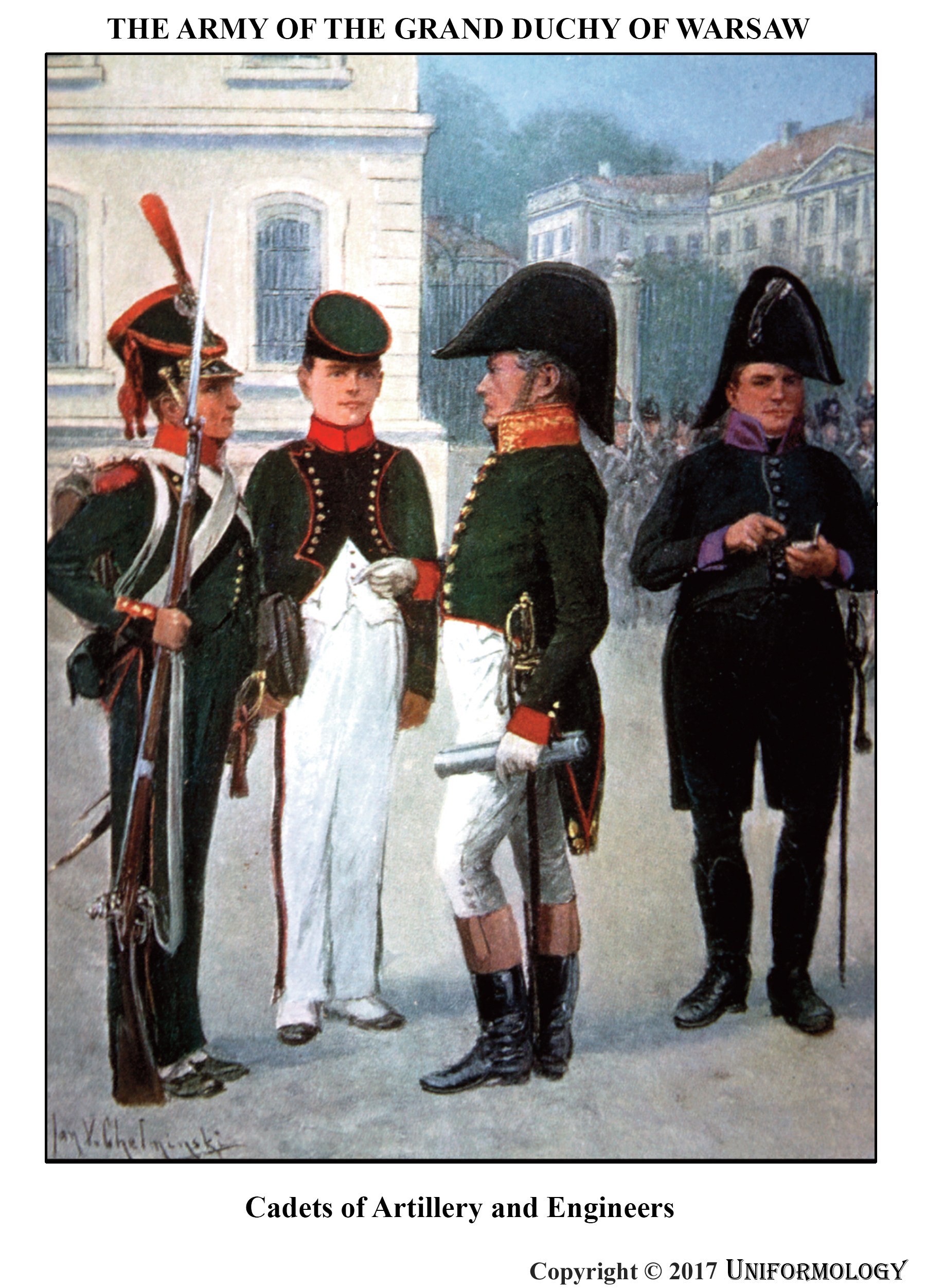THE WORLD OF MILITARY UNIFORMS
1660-1914
UNIFORMS OF THE GRAND DUCHY OF WARSAW 1807-1815
While many Polish troops had fought for France during the early period of the Napoleonic Wars it was not until 1807 after the Treaty of Tilsit that the Grand Duchy of Warsaw was formed by Napoleon I of France. It was a distinctly Polish state formed from Polish lands ceded by the Kingdom of Prussia. The state was nominally under the command of Napoleon’s ally King Frederick Augustus I of Saxony. The Polish people hoped that by aiding Napoleon against their traditional enemies of Russia and Prussia that once again an actual Kingdom of Poland would once again be formed rather than simply being a Duchy. King Frederick never really ruled Poland as his authority was subordinate to that of Napoleon who essentially ruled the state through the French ambassador in Warsaw. It was the soldiers and manpower of the Grand Duchy that Napoleon wasthe most interested in. Between 1807 and the beginning of the ill fated Russian campaign of 1812 the Army went from approximately45,000 men to nearly 200,000 from a country of only 3,000,000 people. What made the Polish troops most effective was the fact that for years they had suffered from partition and were at the mercy of the Russians to the East, the Prussians to the North and the Austrians to the South. They fought for their homeland as much as for the Emperor of the French.
The leader of the Grand Duchy’s army was Minister of War, Joseph Poniatowski. He was born in Vienna on May 7, 1763. He was the nephew of King Stanslaw II. He served in the Austrian Army in 1780 and was a representative to the Russian court in 1787. He was appointed Major General in the Polish Army and served in the Polish-Russian war in 1792. In 1806 he was made commander of the Polish forces fighting alongside the French. In 1807 when the Grand Duchy of Warsaw was formed he was made Commander in Chief of the Polish Army. He introduced universal conscription in 1808 which united the Polish people by making them more patriotic. In 1809 when Austrian troops invaded Poland he led an army of 12,000 men against 25,000 Austrians at the battle of Raszyn on April 19, 1809. The Polish infantry held against the Austrians later he led harassing cavalry attacks against the Austrians with such success that the Treaty of Schonbrunn was signed which reunited West Galacia and Krakow with the Duchy. His gallant leadership fired patriotism in the Poles and the ranks of the army swelled.
In 1812 he led over 100,000 of his troops into Russia with the French invasion. His troops fought valiantly at the Battles of Borodino and Smolensk where he was wounded. After the failure of the campaign he covered the rear of the retreating French army. 72,000 of the Polish troops were lost. As the Russian army followed the retreating French and their allies Poniatowski chose to stand with Napoleon and led his troops into Germany to avoid the Russians. In October of 1813 he was given the rank of Marshal of France. The only foreigner to ever receive this honor. At the battle of Leipzig he was wounded and drowned while trying to cross the River Elster.
With Poniatowski’s death and Napoleon’s abdication the Grand Duchy was no more. The brief and gallant glories of the Army of the Grand Duchy of Warsaw lasted only six years. The Congress of Vienna, in its wisdom fell prey to the influences of its powerful participants. Poland was partitioned once more with Eastern portion (which included the Grand Duchy) went to Russia and the western portion to Prussia while the Austrians retained the southern part (Galicia).
ABOUT THE ARTIST
Jan (John) Chelminski was a popular historical and period painter. He was born in 1851 and died in 1925. He was famous for his Napoleonic arms collection. As an artist he studied first under Julius Kossak, a great historical and equine painter (his paintings fetch great prices in Poland), then in Munich with J. Brand ( a great orientalist popular in in Germany and Austria during the turn of the century - some of his paintings are displayed in the U.S.). Chelminski worked in Paris, Munich, London and New York where he worked for Theodore Rooseveldt. He also worked for the King of Bavaria and the Emperor of Russia and became quite wealthy. Chelminski painted hunting scenes, sporting events, and genre paintings. After 1890 he dedicated himself to historical painting - especially the Napoleonic period, all very detailed and thoroughly researched works. In 1904 in Paris he published L’Armee Polonaise du Duchie de Varsovie with the description and text bu Waclaw Gasiorowski a famous Napoleonic period Polish writer of the era. These plates come from that book.
PART 1 - GENERALS, STAFF, AIDES DE CAMPE
ARTILLERY & ENGINEERS
